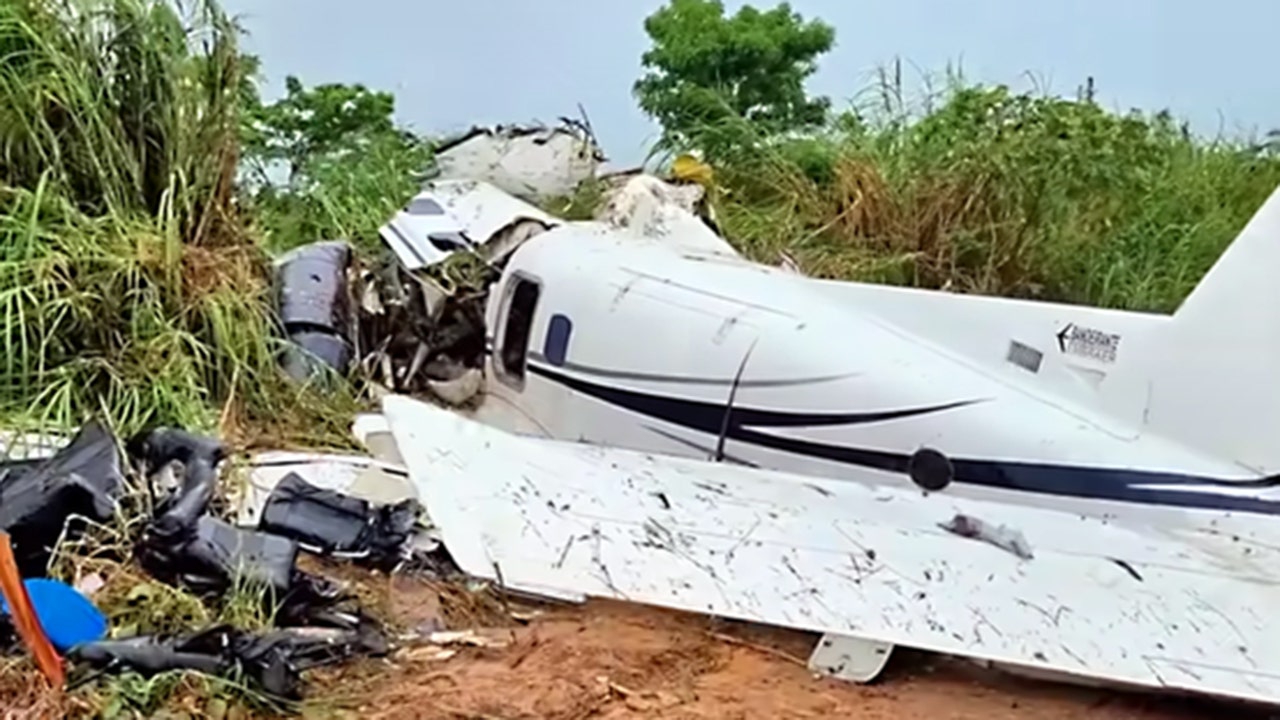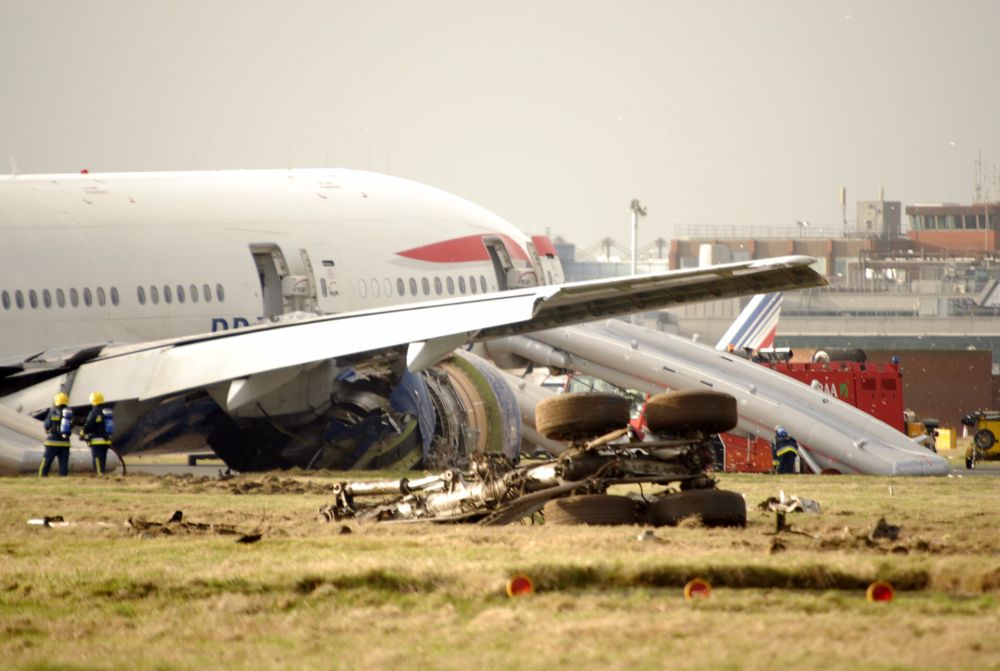Historical Context of Brazilian Flight Crashes

Brazil’s aviation history, like any other, is marked by both triumphs and tragedies. Unfortunately, the country has experienced a number of devastating flight crashes, each leaving a lasting impact on the nation’s aviation safety landscape. These incidents have spurred significant changes in regulations, technological advancements, and a renewed focus on safety protocols.
Timeline of Significant Flight Crashes, Brazil flight crash
The timeline of significant flight crashes in Brazil reveals a pattern of tragic incidents, each prompting a reassessment of safety measures.
- 1973 – Varig Flight 820: This tragic incident involved a Boeing 707 that crashed into the Andes Mountains in Chile, killing all 63 passengers and crew members. The crash was attributed to pilot error, as the crew misjudged their altitude and flew into the mountains. This event sparked a major investigation and led to stricter training requirements for pilots.
- 1982 – Varig Flight 254: A Boeing 737-200 operating this flight crashed into a mountainside near São Paulo, resulting in the deaths of 137 people. The crash was attributed to a combination of factors, including pilot error, instrument failure, and poor weather conditions. The incident highlighted the need for improved weather forecasting and aircraft instrumentation.
- 1989 – TAM Airlines Flight 402: A Fokker F27 Friendship carrying 54 passengers and crew members crashed into a residential area in São Paulo, killing all on board and three people on the ground. The crash was attributed to pilot error and a lack of proper safety procedures. This event prompted a review of air traffic control systems and procedures in Brazil.
- 2007 – TAM Airlines Flight 3054: A Boeing 737-800 operating this flight crashed at São Paulo-Congonhas Airport, killing 199 people. The crash was attributed to a combination of factors, including pilot error, runway conditions, and weather conditions. This incident prompted significant changes to safety regulations at Congonhas Airport, including the closure of a runway and the implementation of new landing procedures.
- 2015 – TransAsia Airways Flight 235: A ATR 72-600 operating this flight crashed into a river in Taiwan, killing 43 people. The crash was attributed to a combination of factors, including pilot error, mechanical failure, and weather conditions. While not a Brazilian crash, this incident highlights the importance of proper pilot training and maintenance protocols.
Investigation and Analysis of Recent Brazilian Flight Crashes: Brazil Flight Crash

Investigating and analyzing flight crashes in Brazil is a complex process involving multiple agencies and expertise. The Brazilian authorities are dedicated to understanding the causes of these incidents and implementing measures to prevent similar tragedies from occurring in the future.
Investigation Process
The investigation process in Brazil typically involves several key players, including the Brazilian National Civil Aviation Agency (ANAC), the Center for Investigation and Prevention of Aeronautical Accidents (CENIPA), and the Brazilian Air Force.
- Initial Response: The initial response to a flight crash involves securing the crash site, gathering evidence, and providing medical assistance to any survivors.
- Data Collection: The investigation team collects data from various sources, including the aircraft’s flight data recorder (FDR) and cockpit voice recorder (CVR), air traffic control recordings, weather data, and witness testimonies.
- Analysis: The collected data is analyzed to determine the sequence of events leading up to the crash, identify any potential contributing factors, and determine the probable cause of the accident.
- Safety Recommendations: Based on the findings of the investigation, the authorities issue safety recommendations to address the identified issues and prevent similar accidents from occurring in the future.
Recent Flight Crash Investigations
Recent flight crashes in Brazil have highlighted the importance of ongoing safety improvements in the aviation sector.
- 2022 TAM Airlines Flight 3054: This accident, which occurred in São Paulo, involved a Boeing 737-800 that crashed while attempting to land during a heavy rainstorm. The investigation revealed that the pilot had misjudged the aircraft’s position and altitude, leading to a controlled flight into terrain (CFIT). The investigation also identified deficiencies in the airline’s training programs and the lack of a standardized approach for handling challenging weather conditions.
- 2021 GOL Airlines Flight 1907: This accident involved a Boeing 737-800 that experienced a bird strike during takeoff. The bird strike damaged one of the aircraft’s engines, causing a loss of power. The pilots were able to safely land the aircraft, but the incident highlighted the importance of bird strike mitigation measures at airports.
- 2020 Azul Airlines Flight 4475: This accident involved an Embraer 195-E2 that experienced a mechanical failure during flight. The investigation determined that the failure was caused by a faulty component in the aircraft’s engine. The incident prompted the manufacturer to issue a service bulletin requiring the inspection and replacement of the affected components.
Impact and Aftermath of Brazilian Flight Crashes

The aftermath of a Brazilian flight crash reverberates through the lives of those affected, leaving a trail of grief, trauma, and a lasting impact on the nation’s aviation industry and its people. The immediate consequences are often stark, with families grappling with the loss of loved ones and the broader community struggling to comprehend the tragedy. However, the long-term effects extend beyond the initial shock and sorrow, influencing the development of safety procedures, public perception, and the overall evolution of Brazil’s aviation sector.
Impact on Families of Victims
The loss of life in a flight crash leaves an indelible mark on the families of victims, causing immeasurable pain and grief. The immediate aftermath is often characterized by shock, disbelief, and the struggle to process the enormity of their loss. Families are left to navigate the complexities of grief, while simultaneously dealing with practical matters such as identification, funeral arrangements, and the legal complexities surrounding compensation.
The emotional toll on families is immense, and the long-term impact can be profound. Many experience prolonged periods of grief, anxiety, and depression, often struggling to cope with the sudden and unexpected loss of a loved one. The trauma of the event can also affect their ability to function in daily life, leading to difficulties in relationships, work, and overall well-being.
- Financial Strain: Families often face significant financial hardship in the aftermath of a crash, as they may lose their primary breadwinner and struggle to cover funeral expenses and other associated costs.
- Psychological Trauma: The psychological impact on families can be long-lasting, with many experiencing post-traumatic stress disorder (PTSD), anxiety, and depression.
- Loss of Support System: The loss of a loved one can disrupt family dynamics and leave surviving members feeling isolated and unsupported.
Impact on the Brazilian Aviation Industry
Brazilian flight crashes have a significant impact on the country’s aviation industry, leading to increased scrutiny, safety audits, and often resulting in changes to regulations and procedures.
- Safety Audits and Investigations: After a major crash, authorities conduct thorough investigations to determine the cause and identify any contributing factors. These investigations often lead to safety audits of airlines and airports, resulting in recommendations for improvements and changes in procedures.
- Changes in Safety Procedures: Safety regulations and procedures are often reviewed and updated in response to crashes, with a focus on addressing identified vulnerabilities and enhancing safety protocols.
- Public Confidence: Major crashes can erode public confidence in the aviation industry, leading to a decline in passenger numbers and a shift in travel preferences.
- Economic Impact: Flight crashes can have a significant economic impact on airlines, resulting in financial losses due to damage to aircraft, compensation claims, and potential lawsuits.
Impact on Public Trust in Aviation
The public’s trust in aviation is a delicate balance that can be easily shaken by major accidents. Brazilian flight crashes, particularly those involving high-profile airlines or significant loss of life, can significantly erode public confidence in the safety of air travel.
- Increased Scrutiny of Aviation Industry: Following a crash, the aviation industry comes under intense scrutiny from the public, media, and regulatory bodies.
- Public Perception of Safety: Public perception of safety can be influenced by media coverage and the perceived response of authorities to the crash.
- Travel Behavior: Public trust in aviation can affect travel behavior, with some individuals opting for alternative modes of transportation or avoiding air travel altogether.
- Impact on Government Policies: The public’s perception of aviation safety can influence government policies related to aviation regulation, funding, and infrastructure development.
Broader Societal Implications
Brazilian flight crashes have broader societal implications, impacting public discourse, social attitudes, and the development of safety regulations.
- National Mourning and Solidarity: Flight crashes often evoke a sense of national mourning and solidarity, with people across the country expressing grief and offering support to the families of victims.
- Increased Awareness of Safety Issues: Crashes can raise public awareness about aviation safety issues, leading to increased scrutiny of regulations, procedures, and industry practices.
- Calls for Reform: The aftermath of a crash often triggers calls for reform in the aviation industry, with stakeholders advocating for stricter regulations, improved safety protocols, and increased accountability.
- Impact on National Identity: Major flight crashes can have a lasting impact on national identity, shaping public perceptions of the country’s ability to ensure safety and security.
Brazil flight crash – The recent tragic flight crash in Brazil has brought to light the immense human cost of such disasters. It’s a stark reminder of the fragility of life and the profound impact such events have on families and communities. It’s during times like these that we look to the trusted voices of news anchors like David Muir for clarity and compassion, as they navigate the complexities of reporting such devastating events with empathy and respect for the victims.
The news of the Brazil flight crash can be incredibly jarring, leaving many feeling a sense of shock and disbelief. It’s easy to get caught up in the immediacy of the tragedy, but it’s also important to remember that such events can trigger a range of emotions.
Understanding the events of September 10th, 2001, the “Sept 10 debate” , can help us process the impact of unexpected events and their lasting effects. By reflecting on the past, we can find strength and resilience to navigate the present and future, especially in the face of such devastating news.
